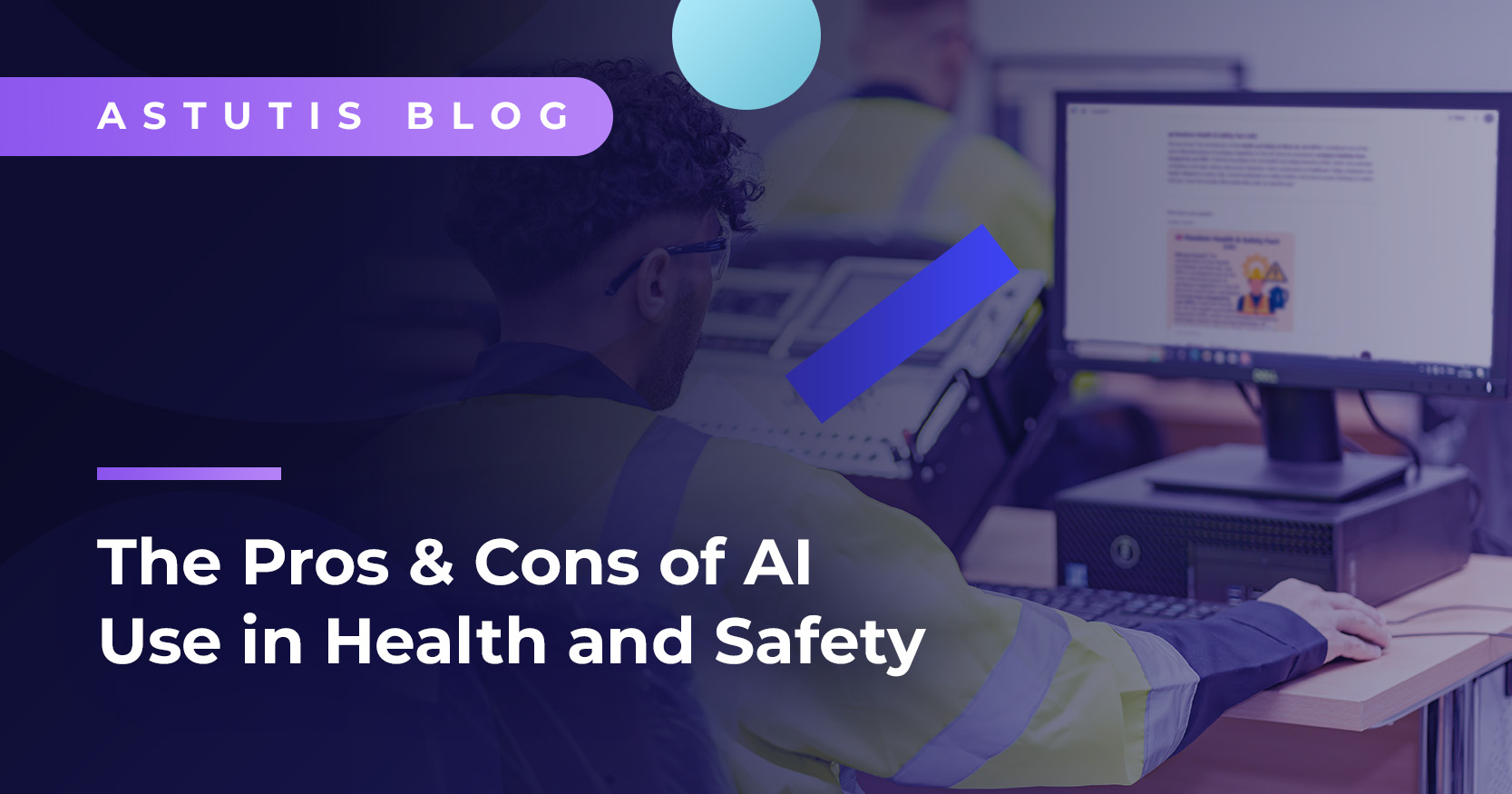11 Tips on Worker Involvement in Safety & Health (WISH)
Worker involvement in safety and health (WISH) is a two-way process of collaboration whereby both employers and employees work together to spot, solve and own health and safety problems for the improvement of organisational safety and employee health as a whole.
Supplementary to competent health and safety leadership, access to the right training and advice, worker involvement plays an integral role in effective organisational safety and health management. Such collaborative working can lead ‘buy-in’ and in turn, increased productivity, profitability and workforce loyalty levels, with research revealing that worker representation and consultation play a significant part in improving safety and health at work. ISO 45001 further emphasises the importance of consultation and worker participation.
Benefits of Worker and Employer Involvement in Health and Safety
Responsibility for health and safety is shared by both employers and employees. A workforce that feels valued and involved in the decision-making process plays an integral role in a high-performing workplace. Empowerment, up-skilling and involvement in making decisions reveals a commitment to worker safety, health and wellbeing.
According to research conducted by the Health and Safety Executive (HSE), increased worker involvement in health and safety led to:
- Lower accident rates: Companies where employees feel empowered to contribute to health and safety decisions experience 14% accident rates compared to workplaces where employees have no involvement, where accident rates stand at 26%.
- More positive health and safety climates: 77% of employees reported feeling motivated to address health and safety concerns when involved with health and safety decisions, compared to just 20% in environments where health and safety involvement was lacking.
- Better control of risks: Slips, trips and falls are some of the most common accidents that occur in the workplace. Controlling them was found to be effective in 76% of workplaces where employees felt they were involved in decisions, compared to 40% if they felt they were rarely or never consulted.
Barriers to Engagement
However, for many, the subject of health and safety can be perceived as complex and off-putting, with key legislation, regulations and requirements difficult to understand. A general awareness of the role of regulatory bodies like the Health and Safety Executive (HSE) can be low, and often associated with enforcement rather than prevention in many organisations.
Barriers to engagement (most arise from lack of application of soft skills):
- Fear.
- Respect.
- Age/experience.
- Terminology.
- Transient workforce.
- Lack of understanding and awareness of the meaning of health and safety.
- A perceived complexity of health and safety legislation and regulations.
- Remote/peripatetic workers.
- Cultural attitude in the workplace - value attached to involvement in health and safety and belief that the implementation of health and safety is costly (in terms of both time and resources).
- A general belief that good health and safety practices prevent quick and efficient working.
- No desire to engage by all parties.
- People failing to recognise what they are good at.
- Managers not aware of the benefits - issues relating to the time and cost incurred through the implementation of good practice.
- Staff often seen as a number.
- Managers often under too much pressure to use soft skills (easier to give out orders).
11 Tips on Increasing Worker Involvement
Refine and Re-Define
Worker involvement in health and safety should be viewed as a continuing process and never to be considered ‘complete’. Organisational safety should continually seek to evolve and adapt to environmental as well as technological factors.
Take a Top Down Approach
Senior directors, managers and supervisors should lead by example. If there is visible support for a ‘worker involvement culture’, the job of adoption and positive ‘buy-in’ will be made easier. Key addresses at meetings, dissemination of messages, instructing managers and making the subject a boardroom issue will all serve to reinforce a lead from the top approach which will serve to permeate operations.
If not already utilised, training courses such as the IOSH Managing Safely serve as great way to increase 'buy-in' from supervisors and managers. Specifically designed for those in positions of responsibility, the course has a trickle down effect that helps embed a safety culture throughout an organisations. The IOSH Managing Safely also has a host of other benefits for organisations as well.
Communicate
Explain the key objectives in a clear and consistent manner. Use terminology that workers will understand and be receptive too and learn how to use a variety of methods to reach different groups of people. Explain the importance of involving your workforce in matters of occupational health and safety and the potential outcomes of buy-in. Analogies, workplace scenario development and key statistical data can help reinforce your message.
Account for Opinions
Arrange an employee opinion survey. Act on the results - suggestions/comments/shortfalls. Openness and visibility here will secure you credence as employees see a clear commitment and that you are valuing their involvement and taking their opinions seriously.
Feedback
If you are acting on suggestions, make sure that you provide the employee who offered the suggestion with appropriate feedback. Even if you are unable to act on the suggestion, a response (including credible reasons why) will be valued. An employee’s viewpoint should be taken seriously – these are your ‘front line’ staff after all. Consider a central area for storing these suggestions and their responses that can be accessed by everyone.
Engage
Your workforce at all levels in the hierarchy. Use different tactics for the various different groups and possibly even at an individual level – e.g. email might not work on the factory floor or in a warehouse. You might want to deploy posters about health and safety on-site or in the office to increase the availability of bite-sized information that helps to promote good practices.
However, some factories may have adopted ‘pc kiosks’ for central sources of information (combined processes, holiday forms, emails etc) - however this does heavily rely on a proactive workforce when considering WISH and may need to be supported with reinforcing measures.
Walk the Walk
Be seen, conduct site walk-abouts and talk to staff. Consider assembling small groups of staff regularly to conduct safety observation walks without seeming like ‘big brother’.
Maintain
Develop systems of reporting accidents, near misses, problems or complaints and ensure anonymity. In addition to creating thorough risk assessments, while this can be key in initial engagement efforts, few organisations get this right in the longer term and use it as a valuable tool to shaping organisational health and safety culture.
Allocate
Representatives and further ensure that these reps receive the appropriate training covering the soft skills they will need (eliciting views, presenting a case, feeding back to colleagues) as well as in health and safety. While people are generally reluctant to volunteer as a representative of employee safety, it may be worth having an informal chat with those employees you consider might make good health and safety reps. Look for the appropriate skill set and lend credibility to your efforts. Consider offering inducements and rewards – financial or otherwise.
Establish a Committee
Committees have a balance of employee representatives and managers. While leadership from the top is vital, senior management might consider being absent from parts of meetings in the initial stages to ensure that there is no intimidation from speaking up.
Improved communication is essential for promoting WISH. Increased emphasis should be placed on face-to-face methods, avoiding densely written, detailed information that is considered difficult to digest and understand for a large percentage of the workforce.
Trust the Process
Like any new business process, engaging workers will take time. While you can expect to achieve some results in the short term, many organisations report that it can take up to 5 years to embed a new process.
Opportunities for Engagement Using Soft Skills
There are several points where health and safety professionals can seek to improve engagement by using soft skills. Encouragement equals engagement, and if workers feel they are doing something well they will likely hope to have some external validation to confirm they are.
- During annual appraisals: A natural point for employers and employees to reflect on health and safety performance. Depending on the level of involvement from the employee you could also set some health and safety KPIs for the next appraisal.
- Through recognition: Recognising individuals or teams for embodying WISH values sets a standard for behaviour and attitudes, showing that these aspects are not only valued but celebrated.
- Through praise: Genuine praise can have a profound impact on an individual's happiness. It creates positive emotions and strengthens social connections within teams and organisations.
Added Incentives for Involvement
If you are finding it difficult to engage staff in health and safety, implementing other forms of encouragement from the following suggestions can help reach others that are hesitant to participate.
- Salary addition/promotion: Workers might feel they are owed some financial compensation or progression for their increased responsibilities.
- Time allowed for training within working hours: Employees might be hesitant to engage if they are expected to partake in training in their own time.
- A reduction in the scope of the employee’s ‘normal’ job: The workforce might find it hard to engage when they are already tight for time because of their day to day responsibilities.
Cultural change lies at the heart of any proposals for change and organisations in all sectors need to address the key issues fundamental to an effective WISH strategy. Employers need to continually work with employees and employee representatives to address occupational safety and health issues in the workplace. Workers should be encouraged to become involved in health and safety in their workplaces and offered opportunities to become representatives and furnished with the necessary training and support to be confident in their roles. Furthermore, managers need an appropriate understanding of how to best engage their staff and the associated benefits.
Representatives of employee safety should further be afforded the same rights as union-appointed 'health and safety representatives'. Positive health and safety cultures are ones in which there is trust and workers are encouraged to raise any issues they may have.
When developing your WISH policy, ensure you take the views of shift-workers and part-time workers into account. You may want to take staff to a neighbouring organisation with an effective programme of WISH. Either way, WISH will not happen unless there is a genuine commitment to a ‘no-blame’ culture.
Improving WISH starts with proper training. The IOSH Managing Safely below is used by organisations across the globe to create self-governance and embed a strong safety culture in the workforce.
Related Blogs

Real Life Stories










